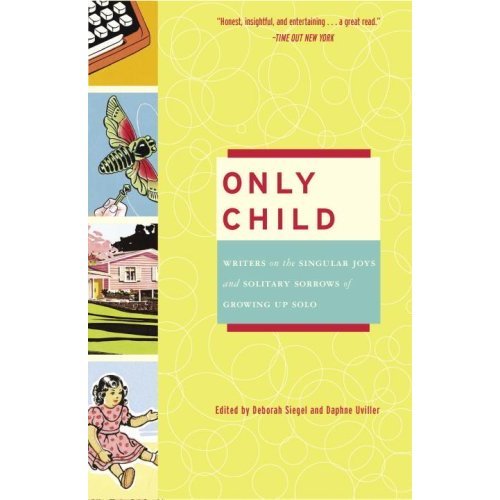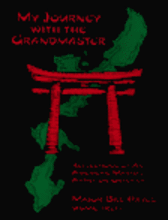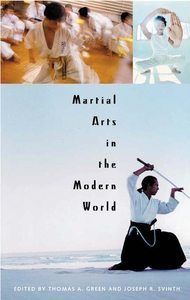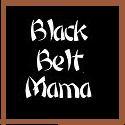Dirty Little Secrets
When I was pregnant with my son, I always dreamed of the mom I would soon be. I would be perfectly put together. I would bake whole-grain cookies and serve balanced meals that we would all eat together at the table after saying grace. I would do crafts and build cool forts with blankets. I would be patient. I would only buy gender-neutral, educational toys. Then, I had my son. And all those ideas, they flew out the window with my sanity. Being a parent, more often than not, is just a daily game of survival-and often, I would easily get voted off this island.
Dirty Little Secrets from Otherwise Perfect Moms is a book to revel in our imperfections. Mothers tend to "withhold the truth" from other mothers, as if revealing our imperfections somehow makes us a failure. Instead, we bottle it up and act like everything is perfect and balanced. In this new book, Trisha Ashworth and Amy Nobile (also authors of I Was a Really Good Mom Before I Had Kids) got moms to reveal their deepest, darkest secrets of motherhood. At times, I giggled. Sometimes, my mouth dropped in horror. Other times, I found myself nodding in agreement. All the time, I was taken with how honest these mothers were being.
The hardest part of motherhood for me is the constant feeling that other mothers are better mothers than I am. Dirty Little Secrets makes me feel that I am not alone. I have this book already packed up to send to a friend who is a new mother. It’ll be a "Welcome to the World of Guilt and Incompetent Feelings" "Happy New Baby!" gift.
If you have a dirty little secret of your own to share, head on over the book club at Mother Talk. Share your dirty little secret by May 1, 2008 and you might just win a $25 Amazon gift certificate or a free copy of the book.
For a refreshing and honest look at motherhood and for reminding me that even if I get voted off of this island, I am not alone, I give this a
![]()
Only Child
Raw. Poignant. Emotional. Humorous. Honest. As readers, we all bring our own baggage with us to every book we read. Like art, our reading experience is just that-an experience. When asked to review Only Child: Writers on the Singular Joys and Solitary Sorrows of Growing Up Solo, I brought my own baggage with me. I’m not an avid non-fiction reader, not because I don’t enjoy it, but instead, as an English teacher, when I am not reading for my classes, I want to escape into a book-not have to think. However, Only Child was a book I wanted and needed to read, and every night I allowed myself 20 minutes no matter how late it was to fall into this honest look at only child-dom put together by editors Deborah Siegel and Daphne Uviller.
You see, I never expected to raise an only child. I am one of two children who always had dreams of a loud, raucous, large family reminiscent of the Cheaper by the Dozen crew. My husband is one of seven and certainly wanted to recreate that. When we were first dating, we’d have the "How many kids do you want to have" talk-he said five, I said, "We’ll see after the first one." Looking back, I feel like I cursed us. It was extremely difficult to have our son, and now, almost four years later, we are faced with an almost certain finished family. Infertility has robbed us of the family we wanted not just for us, but also for our son. He grows up alone, no partners in crime, no built in friend. Only Child explores these issues, from the parent point-of-view, from the only child, and from the only child as parent point-of-view.
What struck me the most as I read this was how raw and emotional it was. Each essay delved into a different aspect of what it was like to be an only child. Each writer was more honest than I imagine most people can be. At times, without even realizing it, I found myself sobbing. It’s not that the plight of the only child is a bad one, because many of these essays showed just how great it can be, but all of the essays did demonstrate some similar themes, the biggest one being, "What happens when I am all that is left?" This haunts me as a mother of an only child. What will my son do when we are gone? Who will be there to support him? Will he be lonely? Who will be there to help him tell the stories of our family? I read this book to find those answers and find comfort in a life I didn’t choose. Sometimes, Only Child provided that for me, other times, it hurt to read the words of the "lonely child."
What strengthened me after reading this was that, for the most part, only children feel incredibly loved. Most of them talked about this bond they have with their parents. John Hodgman, in his essay "A Letter to My Second Child," discussed the family of three as "stable as a triangle, unlikely to collapse, each point strengthening and relying on the other" (158). I like this concept, this idea of stability that I hopefully will provide for my son. Together, we will take on the world. Hopefully, along the way, I will teach him how to play well with others so that he might find some stability in other relationships. The idea of him being all alone tears me up inside, but I have to trust that what these only children tell me is the truth: that they are very well loved, very stable, and while sometimes envious of sibling relationships, they always are grateful for the life they have been given.
For the depth of honesty shown in the book, for giving a voice to this mysterious group called "onlies," for giving comfort to a mother desperately seeking happiness for her only child, I give this a:
![]()
Ultimate Flexibility: A Complete Guide to Stretching for Martial Arts
I used to train with this great guy. He was a couple ranks ahead of me and he was always so focused on improving himself and his technique inside and outside of the dojo. Knowing that he needed to work on flexibility, he spent an entire summer working on it by stretching with a ladder. I remember him telling me that by the end of the summer, he had achieved only one rung in flexibility and he was disappointed with that. I thought it was a fabulous accomplishment. There’s a fairly big gap between rungs! I need to shoot him an email or something and recommend Ultimate Flexibility: A Complete Guide to Stretching for Martial Arts by Sang H. Kim Ph.D.
If you’ve ever wanted to learn more about flexibility and proper stretching for training in the martial arts, this is your book. Divided into seven easy to maneuver sections, this book has it all. It starts with the "big picture" and explains stretching so that my two-year old could understand it. Next, it’s on to flexibility where issues such as age, gender, activity level and overall conditioning are addressed. Chapter three is all about stretching. There’s also lots of information in this section on stretching properly so as not to injure or weaken joints (I should have had this book months ago). Other chapter titles include: Understanding Your Body, Your Workout Plan, The Exercises, and The Workouts.
Whether you participate at a traditional dojo that teaches striking techniques and kobudo or a training school focused entirely on grappling, this book provides pictures and detailed instructions that map out a perfect warm-up, workout plan, and cool down program that will help improve your flexibility and maintain a healthy (hopefully) injury free body.
Exercises are broken down into body parts that include: the neck, arms, wrist and hand, hip, back, and even foot and ankle exercises. It’s easy to follow too, so that you can see a photograph of how it’s done and just get to it. There’s no Twister-style wondering if you’re doing something right or not.
The Workouts section includes customized workouts for light and full contact, grappling, MMA, boxing, weapons, and high kick flexibility. There are also tips in this section on how to obtain a full split (could have used that during cheerleading try-outs in junior high school) and 20 tips on high kicks.
The great things about this book are that the main points are reiterated plenty. Rereading a section is entirely unnecessary as each section ends with a review of sorts that provides Q & A of the main points for each section. With easy to understand descriptions and such great insight into flexibility and how to safely go about getting it, this book is an absolute must for any serious martial artist.
The only very small drawback to this book is that there are some typo/grammatical issues here and there throughout the book. It’s nothing that prevents one from understanding the content, but it’s just distracting enough for a former English teacher that I had to mention it.
For the overall great content and helpful nature of the book, BBM gives Ultimate Flexibility:
![]()
If you’d like to obtain your own copy of "Ultimate Flexibility" simply leave a comment below. Three copies of the book and three Ultimate Flexibility DVD’s are being given away through The BBM Review thanks to the very generous Turtle Press. You don’t even have to be brilliant. Just type in your contact info below and say "Enter Me." Drawings will be held at the end of Admired Martial Artists Month. Don’t miss your chance to win! Enter now!
My Journey with the Grandmaster
!Have you ever wondered what it would be like to train in Okinawa under one of the Grandmasters? Do you desire to understand the martial arts more deeply? Are you looking for a martial arts book that takes you on a fantastic journey? Look no further.
"My Journey with the Grandmaster" by Kyoshi Major William Hayes USMC (Ret.) is one of the most amazing books I have ever had the pleasure to read. Although there is not a single color photograph in the entire book, Kyoshi Hayes paints such a visually stunning picture of his journey in the martial arts, and of what life was like as a young Marine stationed in Okinawa learning under Shimabukuro Eizo, a Grandmaster of Okinawan Shorin-ryu Karate-do, that a reader can truly escape to Okinawa while indulging in this engrossing book.
"As I recall, the beach was almost overwhelming in its natural beauty. The sand was course but clean, the water, crystal clear close to the shoreline-deepening to a pure green and then deep blue as you looked out to sea. Over my shoulders I looked up to see some of the huge chunks of coral which had been pushed up from the ocean floor to help form the coastline. Thatches of lush greenery sprung from the seemingly hostile rocks and small sandcrabs scrambled about like tiny commuters on their way to and from work."
Vivid descriptions of the landscape, the people, the cuisine, the politics, the racial unrest during the Vietnam war in the military and of his intense training in Shorin-ryu provide the reader with a wealth of information to soak in and digest.
With the writing and the unique perspective he provides in this book, Kyoshi Hayes is able to transport you to Okinawa. Whether your style is Shorin-Ryu or something else entirely, there is something to be learned from this book. Through his retelling of some of his training stories, one can glean so much information that it makes you think about your martial arts training in a way you never have before.
"At that point in your training you are no longer in a position where a "block" is necessary. You also start to understand that the "blocking" motions can now have totally different purposes. Some of the motions may become strikes to selected points on the body or can be used to manipulate the joints-painfully-especially when the timing of the movements is changed along with the angle. These techniques when combined with the real purpose of stances expand your arsenal and the scope of the art itself."
Although it’s a book that can be easily read cover to cover in a matter of days, I found myself slowly reading it chapter by chapter to fully think about the knowledge Kyoshi Hayes was imparting through his writing. I also wanted to make it last longer since it is such an enjoyable and insightful book to read.
His insight regarding traditional karate is authoritative, and with good reason. The evolution of Kyoshi Hayes as a martial artist is apparent in every aspect of this book.
"Okinawan karate was never developed for the purpose of winning tournaments, it was formulated as a means of killing those who deserve to die and as a means of protecting the lives of those who deserve to live. Pretty basic stuff. To be sure, many of the world’s well-known karate tournament champions are students of Okinawan Karate styles but the systems put together on a tiny island of Okinawa were developed so that the practitioner would survive in real combat situations first and foremost. There were no trophies or rules in the early days of real encounters on Okinawa and such encounters required the ultimate in both efficiency and effectiveness."
Kyoshi Hayes is about to have the 6th edition of his book printed and it will be available to purchase directly through the author. For more information about the book or to purchase it directly, send an email to oldstudent1 at cox dot net. The book is available for purchase for $23 (Virginia residents add 4.5% sales tax). You can even request that the author signs the book for you, making it a treasured purchase for years to come.
My only critique of the book is that it wasn’t longer. This is the first book in a long time that I just didn’t want to end. If you’re a martial artist and you haven’t yet read this book, there’s really only one question to ask yourself: Why not?
"My Journey with the Grandmaster" is the "Grandmaster" of martial arts books, and you don’t want to miss it! For the way the book manages to transport you to the beaches and dojo of Okinawa, for the knowledge it imparts unto its readers, and for the way that it completely makes you rethink about every part of your training, BBM gives "My Journey with the Grandmaster" an unprecedented (and highest honor in the martial arts and on this site) red belt:
All excerpts from the book are printed with the authors permission.
Martial Arts in the Modern World
Digging through a mountain of tall tales and self-indulgent tripe, Thomas Green, Joseph Svinth, and the rest of the authors of "Martial Arts in the Modern World" gather scarce historical facts in an attempt to shed some light on how the world’s many fighting arts evolved into what we see today.
Martial arts history has suffered from severe tampering because there is a lot to gain by making things up. In his book "Living the Martial Way," Forrest Morgan challenges readers to pick up a phone book anywhere in America and look for martial arts advertisements. In every small town, he explains, you are bound to discover high ranking, world champion grandmasters. In just a few short generations, how could obscure Asian arts create thousands upon thousands of supreme ultimate warriors all over the world?
The truth is, many of these high ranking instructors are caught in the great martial hoax where training is secondary to promotions. These practitioners tend to base their reputation on "world championship" tournaments that feature a handful of combatants from neighboring towns (and often have the patches to remind you). And yet, if you talk to these same "experts," they will describe to you the great exploits of their instructors and the miraculous lineages they come from.
How can this schism of logic be explained – how are there so many unqualified practitioners espousing so many credentials? "Martial Arts in the Modern World" tries to tackle this problem; not by singling out individuals, but by taking the rare approach of factual analysis.
How did Kendo ACTUALLY start in North America? How did Gracie Jujitsu ACTUALLY come about? Have Zen and Kyudo ALWAYS been linked? "Modern World" doesn’t take a blind stab at these topics (and others); it provides the dates, times, and names of key players involved. Very little is left up to hearsay.
Unfortunately, as much as I would like this book to be a cure-all for martial nonsense, it cannot even come close to covering all the different styles around the globe. It makes a valiant effort, attempting to explore history from almost every continent, but there is just too much in the sphere of the unknown. In fact, this global effort results in one of the books negative aspects – lack of cohesion. There are no connections via timeline or topic from one article to the next. There is nothing to pull together a consistent central theme. Couple that with a dry writing style that is occasionally tough to digest and "Modern World" falls short of lofty goals.
"Martial Arts in the Modern World" is a haven for anyone wanting to do real research, but not for those looking to indulge in a great yarn. Overall, Ikigai108 gives this book…
Buy it now through the BBM Review Store.












